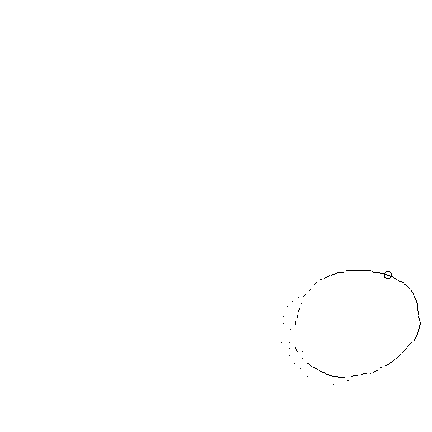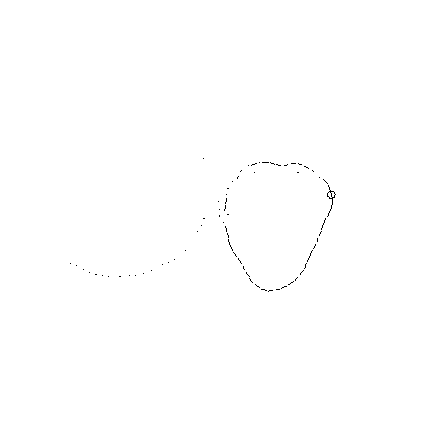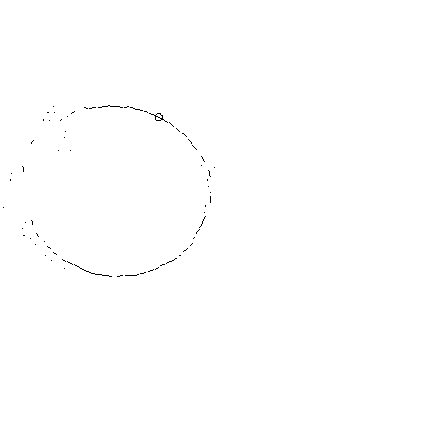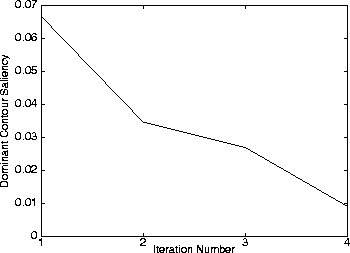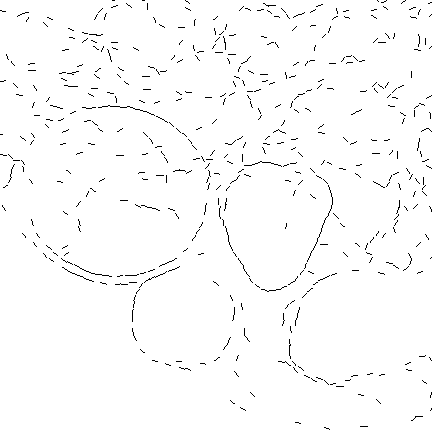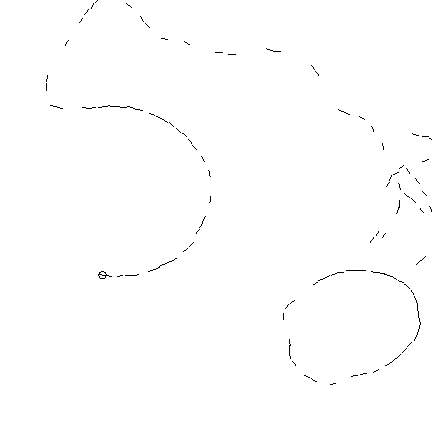
Greyscale image. This is a simple scene with no occlusion. The texture of the fruit on the top left (a cantelope) is similar to that of the background. Hence an edge-detector would have difficulty finding reliable edges on some parts of the boundary of the cantelope.

